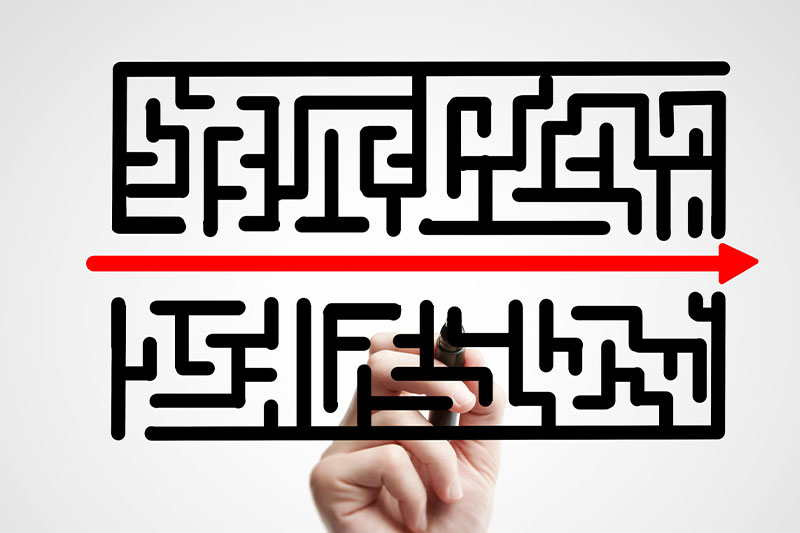Starting position
Following up on offers triggers unpleasant feelings in some of us. On the one hand, memories of incomprehensible rejections and high discount demands come up or you were simply ignored. Some people protect themselves from such rejections by putting off following up. This is fatal, because this procrastination usually costs a lot of energy internally. But what is even worse is that much of the time we have invested in these offers is simply lost. So what can we do about it?
Solution
These seven points have helped me to follow up offers with more fun and success. Before I pick up the phone, I think about it:
1. what makes my offer special?
Even with comparable retail products, small differences in services, for example, can make a big difference. Especially when these match a customer need that we have identified.
2. how can I make the offer even more valuable for the customer through my expertise?
Creativity is required here! It is often the little things that make a big difference – if they are communicated skillfully. I remember kitchen construction colleagues who were always on site in person at the start of assembly and communicated a fixed time slot every day for queries. You have successfully set yourself apart from major competitors and, interestingly, saved time.
3 Plan B: How do I prepare for pretexts?
Occasionally, customers try to turn us away with excuses such as “no time, too expensive, have a better provider, etc.”. Preparation is half the battle in such situations too. The following sentence beginnings help me personally.
“So it’s important to you that I get to the point quickly and that you can quickly see what advantages this offer has for your project?” | “Apart from the fact that you don’t have much time, are there any other reasons not to discuss this offer yet?”
I’ve been able to turn many a hasty attempt to “turn away” into a constructive conversation.
4 How can I courageously ask for the true objection?
This simple question helps me: “Is there anything else stopping you from saying yes? It’s amazing how this question leads to closure or an open conversation about the real objections. The more clearly you know these, the easier it is for you to provide security with your answers or to optimize the offer.
5. how can I get the most out of the follow-up?
Tony Robbins*, the world star among business coaches, puts it in a nutshell: focus on the goal and take immediate, intelligent, massive action.
This brings me to the most important question: What is our actual goal when following up? If our aim is to follow up as many offers as possible, there will be a lot of offers on the table at the end of the day. Or is our goal to make as many closing attempts as possible? With this goal in mind, we will have sales in the evening – and that’s why we created the offers. “Where focus goes, energy flows, “*
The second question that arises is how can I increase the number of completion attempts? Here is an approach that I have been using for many years:
6. how to take intelligent, massive action.
Whenever possible, choose the most direct and fastest means of communication when following up or attempting to close the deal. This will probably also be the telephone in your case. Admittedly, a personal visit on site is much better than a telephone call. However, this also limits your efficiency. A working day simply doesn’t have more than 9 or 10 hours and the family still wants to see you.
Do a quick calculation of how many closing attempts you can make in a single afternoon when you’re really in the flow and doing nothing else? That is enormous!
It is precisely for this and other reasons that top salespeople practice “telephone parties”. The idea is simple. Together with one or two colleagues, you agree on a binding period of
3 hours per week, during which you do nothing other than follow up offers together. To make sure you have more fun, there is a success token for every phone call you make and for every completion attempt, which you drop into your respective glass jar (clearly audible!).
Of course, a winner of the day will be chosen and celebrated! If circumstances permit, use the same office. Listen to each other occasionally and give each other appreciative recognition for particularly refined conversations. Push each other really high. It goes without saying that criticism is prohibited. You want to get into a flow of speed and quality.
7 Plan C: How do I use rejections for follow-up orders?
Cancellations are unavoidable, but 99% of the time they are only a temporary defeat, which means that the business relationship continues. Can I learn from a defeat? Or to lay the foundations for the next deal, because the customer has sensed how I have endeavored to create the best possible offer with the precise benefit?
Conclusion and call for assistance
These 7 points can positively influence the quality and results of a job that we have to do one way or another. But more importantly, these points have helped me to really enjoy the follow-up and to enter the next race as a winner even if the race is canceled.
Let me know about your experiences. Help me to make this little checklist even better. Thank you very much.



